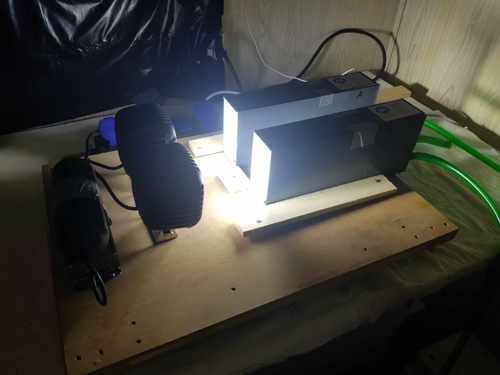North2North Staff exchange report: Comparing marine time series in Svalbard and Greenland

Long-term monitoring programs are key to understand ecosystem changes in a changing climate.
In the following report, Tobias R. Vonnahme states:
Nuup Kangerlua outside Nuuk (GCRC, since 2005), and Adventfjorden (UNIS, since 2010) outside Longyearbyen have some of the longest year-round marine monitoring programs in the Arctic. Comparing time series on different locations across the Arctic can be powerful for detecting changes, trends, and their drivers not only in a local perspective, but in a pan-Arctic context.
In 2022, we compared the methodology of both time series during N2N Staff exchanges. The aim of the mobility in 2022 was to work follow up on new methods developed in 2023 (primary production) and to work on collaborative manuscripts including the two time series.
From the 18th of May until the 4th of June 2023, I went to Svalbard to work closely with the PhD student Cheshtaa Chitkara on two collaborative manuscripts. During the visit, we also involved other colleagues from UNIS (Anna Vader, Ragnheid Skogseth, Janne Søreide) and the GINR (Thomas Juul-Pedersen, Diana Krawczyk, Lorenz Meire, Mie Winding) to contribute to the manuscripts, thereby strengthening the Svalbard-Greenland collaborations. In addition, I followed up on a method established in 2022 for measuring primary production, that we are also using in Greenland (P vs I curves using 14C-DIC tracers in the lab), and that are now integrated in the Svalbard time series. The first data are already part of one of our collaborative manuscripts.
We worked on two manuscripts focusing on long-term changes led by Tobias R. Vonnahme and cross-fjord seasonal patterns in primary production and biomass led by Cheshtaa Chitkara. During the stay we worked closely together in discussing the time series, their comparability, and different statistical and bioinformatic methods. The manuscript on long-term trends identified a drop in phytoplankton species richness in both time series at the same year and discusses potential drivers and the role of coastal water inflow. The manuscript on overarching seasonal patterns includes the Svalbard and Greenland time series, but also a complementary time series in Northern Norway. The aim of the manuscript is to compare spring-, summer-, and autumn- bloom dynamics and their drivers across fjords with different terrestrial influences. The manuscripts will likely be submitted for review in 2023/2024 and the outcomes have already been presented in scientific conferences (e.g., Svalbard Science conference 2023).

Photo by: Tobias R. Vonnahme
